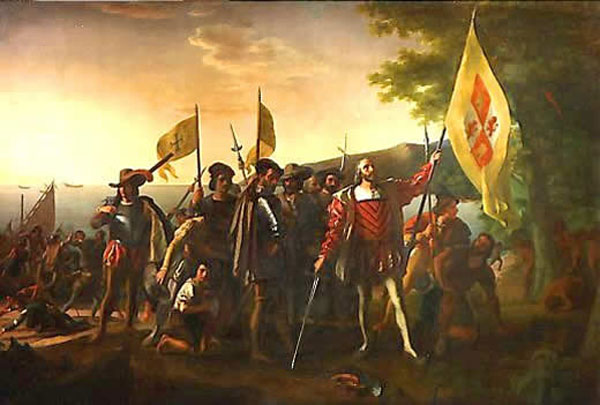An
idea has been developing in my head. Specifically, I was trying to answer this
question: how is the technique of storytelling in Brave New World different from the other works we’ve read? I was hoping to talk about this during class,
but lo and behold there was snow! So I said to myself, why not kill two birds
with one stone, and write a blog post about it? Here we go:
 |
| Christopher Columbus, from oceanexplorer.noaa.gov |
All
of the previous literary utopias (from Thomas More’s Utopia onward) have been told from an outsider. More had Raphael
Hythloday, a world traveler, describe the titular island; Unveiling a Parallel by Alice Ilgenfritz Jones and Ella Merchant told
their story through an unnamed man who travelled to Mars on an “aeroplane”; Edward
Bellamy’s Looking Backward and William
Morris’s News from Nowhere both had “deep-sleep”
narrators, who both left their own world to wake up in the future; Charlotte
Perkins Gilman’s Herland had a
similar device to More’s narrative, in that three men physically travelled to
an unknown location.
All
of these narrators lived their own lifestyle in their own world before travelling
to these utopian locations. They all are easily able to compare and contrast these
new people and cultures to their own. In many cases, we learn about the utopian
culture by the narrator simply asking questions to the natives.
 |
| "Brave New World;" wikipedia.org |
However,
in Aldous Huxley’s Brave New World,
we don’t have that leisure. Our main characters, Lenina Crowne and Bernard
Marx, live in this society and know the culture and daily life of the World
State just like we would know our own. There’s no real need for these characters
to ask questions.
So,
how does Huxley try to explain this new world without spoon-feeding it to us? How
can he help us explain the intricate reproductive details of the Central London
Hatchery and Conditioning Centre without breaking the fourth wall?
The
novel opens up with students taking a tour of the facilities. The Director of
Hatcheries and Conditioning, along with employee Henry Foster, gives
realistically simplified explanations about the technology and ethics of this
world, including the highest record of siblings from a single ovary (pg 19) to
the so-called “Bokanovsky’s Process” (17-18). We, the reader, even learn about what
the children don’t know – such as what a “parent” is (32). In this way, the
reader can study, through the children’s questions and answers and the Director’s
explanations, how this world of Huxley differentiates from our own.
Personally,
I think Huxley was a genius in this way. Where all of our other readings had an
outsider to explain the differences of cultures, he uses a realistic medium (young
students) to explain to us, the reader, what this world is like. We learn about
the World State by people within the culture, not outside it; this adds a whole
new depth to the novel that we had not seen before.
I totally agree with you, but until I read this post I didn't even think twice about not having an outside perspective narrating. It certainly does give a new perspective on what the society is like.
ReplyDeleteIn this way that Huxley writes it gives the reader valuable insight to the ways that the residents are brainwashed from birth and their thoughts on the way that society is laid out.